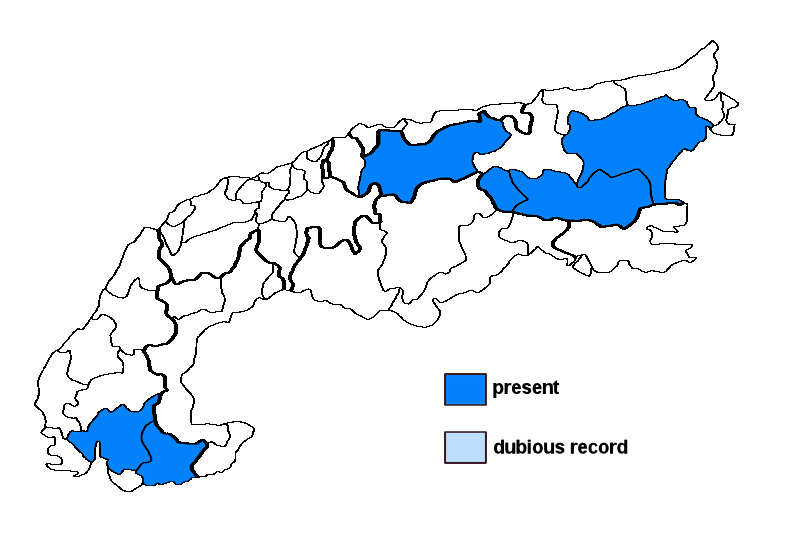Placynthium pannariellum (Nyl.) H. Magn.
Syn.: Pterygium pannariellum Nyl.
Lichenised.
Substrate: siliceous rocks
Altitudinal range: from the submediterranean/colline belt (potential vegetation: mixed deciduous forests dominated by Quercus and Carpinus) to the subalpine belt (potential vegetation: open, taiga-like forests dominated by Larix decidua and/or Pinus cembra and Rhododendron)
Note: a species somehow resembling P. flabellosum, from which it might not have been always distinguished, but with a squamulose, olive-brown thallus on a bluish-black prothallus, narrow, elongated marginal lobes which are only loosely attached to the substrate, a convex upper surface with longitudinal fine grooves, the central squamules with isidioid to ligulate outgrowths of variable length; rarely fertile; on temporarily inundated siliceous rocks along streams and lake shores; widespread in Europe but much more common in the North.
Austria: Tirol; Kärnten; Steiermark; France: Alpes-de-Haute-Provence; Alpes-Maritimes;





